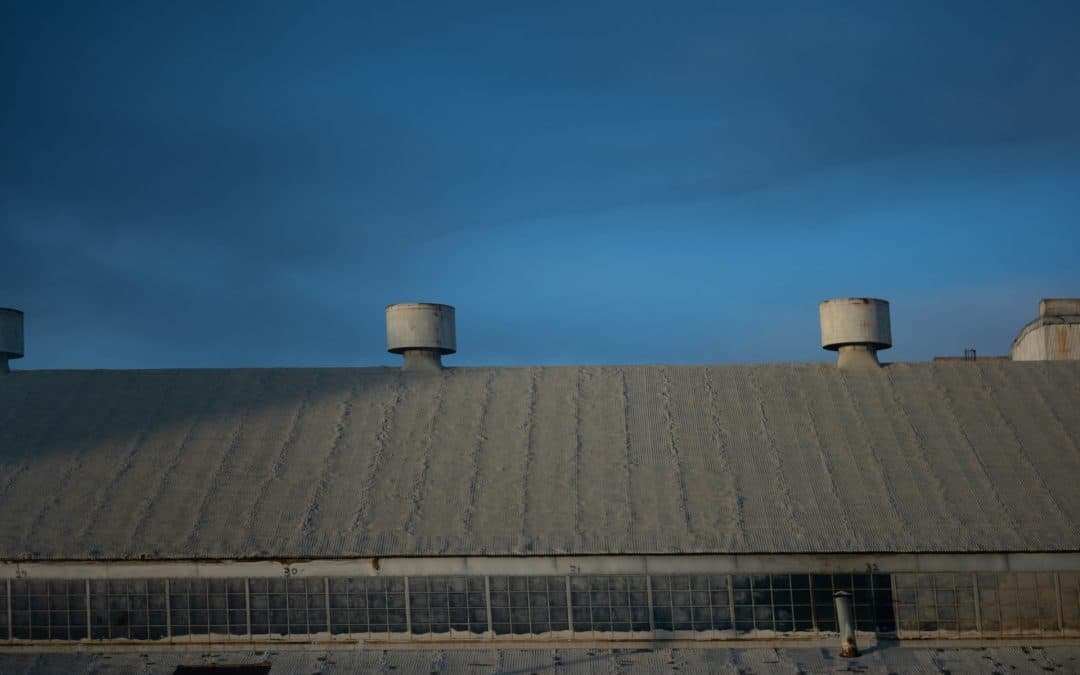Modified bitumen roofing systems are a popular choice for protecting commercial buildings. This type of roofing offers excellent durability, flexibility, and resistance to harsh weather conditions. It is an ideal solution for keeping business properties safe and secure.
Modified bitumen roofs are made from asphalt and various polymers to enhance performance. They can be installed using different methods, such as torch-applied, self-adhered, or cold-applied techniques. These roofs provide a reliable barrier against water infiltration, UV rays, and extreme temperatures.
Understanding the advantages of modified bitumen roofs helps businesses make informed decisions about their roofing needs. Proper installation and regular maintenance further enhance the roof’s performance and lifespan. By investing in a quality modified bitumen roof, commercial building owners can ensure long-term protection and peace of mind.
Understanding Modified Bitumen Roof Systems
Modified bitumen roof systems are a popular choice for commercial buildings due to their durability and flexibility. These roofs are made from asphalt combined with polymers, which enhance their performance and longevity. The modification process makes the asphalt more flexible and resistant to extreme temperatures, a crucial factor for commercial properties.
There are two main types of modified bitumen: SBS (Styrene-Butadiene-Styrene) and APP (Atactic Polypropylene). SBS-modified bitumen is more elastic and flexible, making it suitable for areas with fluctuating temperatures. APP-modified bitumen is more rigid and provides excellent resistance to UV rays.
Installation methods for modified bitumen roofs include torch-applied, self-adhered, and cold-applied techniques. Each method offers different advantages based on the specific needs of the building and the local climate. By understanding these systems and their components, commercial property owners can select the most appropriate roofing solution for their buildings.
Key Benefits of Using Modified Bitumen Roofs
Modified bitumen roofs offer several benefits that make them an excellent choice for commercial buildings. Here are some key advantages:
1. Durability:
- Modified bitumen roofs are highly durable and can withstand harsh weather conditions, including heavy rain, snow, and high winds.
- The added polymers make the roof resistant to cracking and splitting, extending its lifespan.
2. Flexibility:
- The flexibility of modified bitumen allows it to expand and contract with temperature changes without losing its integrity.
- This adaptability reduces the risk of damage caused by thermal stress.
3. Easy Installation and Repairs:
- Modified bitumen roofs can be installed using various methods, offering flexibility in terms of application and cost.
- Repairs are relatively straightforward, and damaged sections can be patched without extensive work.
4. UV and Heat Resistance:
- APP-modified bitumen provides excellent protection against UV rays, preventing premature aging and degradation.
- This roofing type also reflects heat, helping to maintain a cooler indoor environment and reducing energy costs.
5. Waterproofing:
- Modified bitumen roofs offer superior water resistance due to their seamless and multilayered construction.
- They provide an effective barrier against leaks and water infiltration, protecting the building’s interior.
These benefits illustrate why modified bitumen roofs are a reliable choice for commercial buildings, offering long-term protection and value for property owners.
Installation Best Practices for Modified Bitumen Roofs
Proper installation is crucial for the longevity and performance of modified bitumen roofs. Following best practices helps ensure that the roof provides reliable protection for your commercial building. Here are some key installation tips:
1. Surface Preparation:
- Ensure the roof surface is clean, dry, and free of any debris or loose materials. A clean surface allows for better adhesion and prevents future problems.
- Make any necessary repairs to the existing roof structure before installing the modified bitumen to provide a strong foundation.
2. Choosing the Right Installation Method:
- Torch-Applied: Requires heating the material with a torch. It creates a strong bond but must be done by experienced professionals to avoid the risk of fire.
- Self-Adhered: Uses a peel-and-stick method, which is safer and easier to apply, making it a good option for smaller projects.
- Cold-Applied: Uses adhesives to bond the material without heat. This method is suitable for areas where using a torch is impractical or dangerous.
3. Layer Application:
- Apply base sheets, interply sheets, and cap sheets in layers as recommended by the manufacturer. Ensure that each layer is properly aligned and secured.
- Overlap seams appropriately to prevent water leakage and ensure a solid waterproof barrier.
4. Seam and Edge Sealing:
- Pay special attention to sealing seams and edges effectively. Use appropriate sealants to secure all joints and avoid potential leaks.
5. Flashing and Penetrations:
- Install flashing around roof penetrations such as vents, chimneys, and skylights to provide additional protection against water infiltration.
- Ensure that all penetrations are properly sealed and reinforced for added durability.
Following these installation best practices ensures that your modified bitumen roof will perform effectively and provide long-lasting protection.
Maintenance Tips to Extend Roof Lifespan
Regular maintenance and timely repairs are critical for maximizing the lifespan of modified bitumen roofs. Here are some essential maintenance tips:
1. Routine Inspections:
- Conduct roof inspections twice a year, preferably in spring and fall, to identify any issues early. Look for signs of wear, damage, or leaks.
- Inspect after severe weather events, such as storms or heavy snowfall, to catch any new damage promptly.
2. Cleaning the Roof:
- Keep the roof surface free of debris, leaves, and branches to prevent water buildup and potential damage. Clean gutters and downspouts regularly to ensure proper drainage.
- Use a soft broom or low-pressure water spray to clean the roof. Avoid harsh chemicals that could damage the roof’s surface.
3. Address Minor Issues Promptly:
- Repair minor issues such as small cracks or loose seams as soon as they are noticed. Ignoring these can lead to larger and more costly problems over time.
- Use recommended sealants and materials for repairs to ensure compatibility and longevity.
4. Checking Flashing and Seals:
- Regularly inspect flashings around roof penetrations for signs of wear or damage. Replace or repair damaged flashing to maintain a watertight seal.
- Ensure all seals around vents, chimneys, and skylights remain intact and effective.
5. Applying Protective Coatings:
- Over time, the protective coating on a modified bitumen roof may wear down. Reapply reflective coatings as needed to protect against UV rays and heat damage.
By following these maintenance tips, you can extend the life of your modified bitumen roof and keep it in excellent condition.
Final Thoughts
Modified bitumen roof systems play an essential role in commercial building protection. Understanding their composition, the benefits they offer, and best installation practices helps in making informed decisions for your property. Regular maintenance ensures these roofs provide long-lasting performance and protection against various weather elements.
Investing in a modified bitumen roof means committing to a reliable and durable roofing option that will serve your commercial building for many years. Proper installation and regular upkeep are keys to maximizing the lifespan and effectiveness of your roof.
For expert advice and professional roofing solutions, contact Mike Huddleston Roofing Systems. We offer top-quality service and installation for all your roofing needs. Contact us today to see how we can protect your commercial building with the best roofing solutions.

